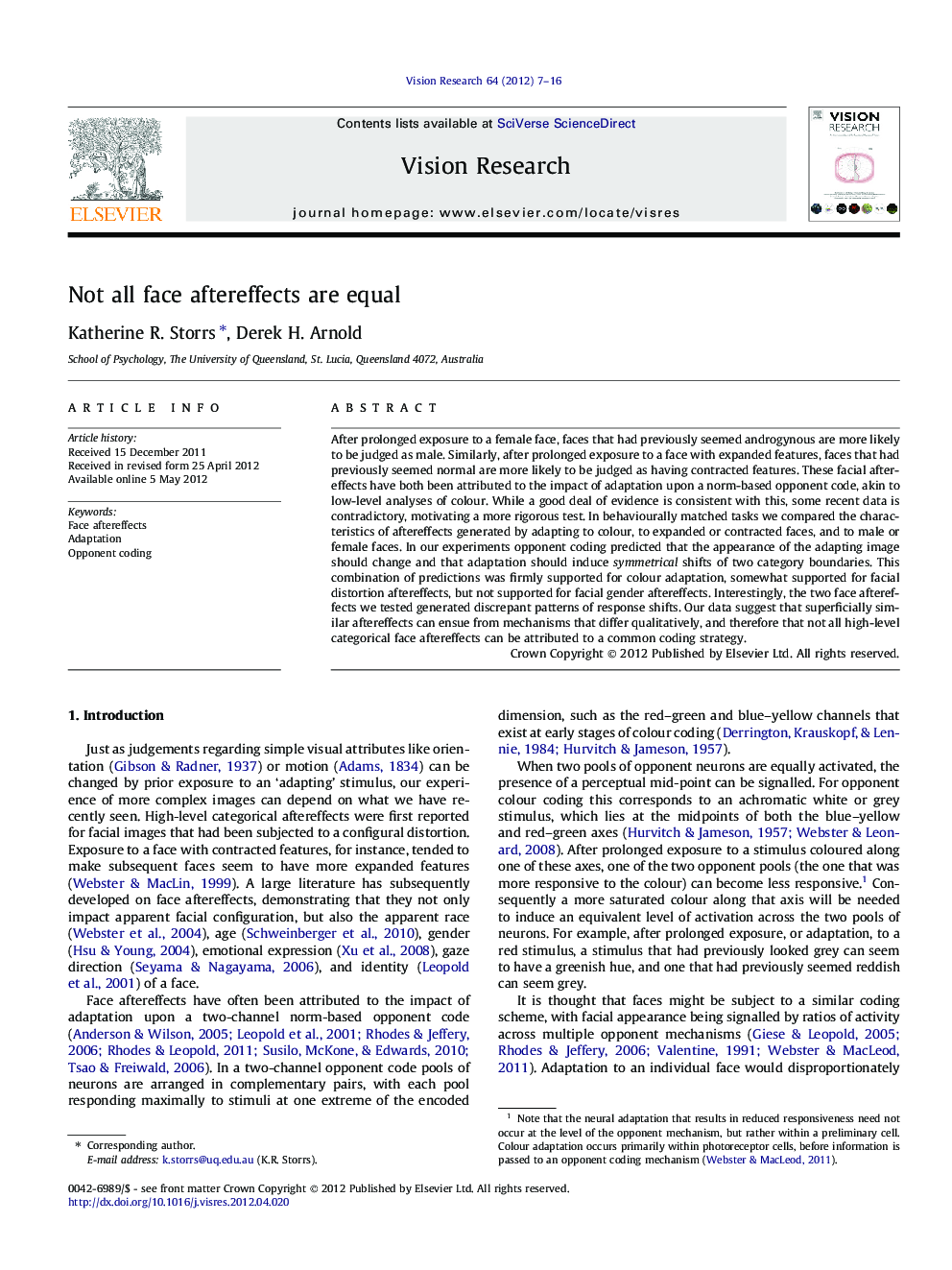| کد مقاله | کد نشریه | سال انتشار | مقاله انگلیسی | نسخه تمام متن |
|---|---|---|---|---|
| 4033945 | 1603230 | 2012 | 10 صفحه PDF | دانلود رایگان |

After prolonged exposure to a female face, faces that had previously seemed androgynous are more likely to be judged as male. Similarly, after prolonged exposure to a face with expanded features, faces that had previously seemed normal are more likely to be judged as having contracted features. These facial aftereffects have both been attributed to the impact of adaptation upon a norm-based opponent code, akin to low-level analyses of colour. While a good deal of evidence is consistent with this, some recent data is contradictory, motivating a more rigorous test. In behaviourally matched tasks we compared the characteristics of aftereffects generated by adapting to colour, to expanded or contracted faces, and to male or female faces. In our experiments opponent coding predicted that the appearance of the adapting image should change and that adaptation should induce symmetrical shifts of two category boundaries. This combination of predictions was firmly supported for colour adaptation, somewhat supported for facial distortion aftereffects, but not supported for facial gender aftereffects. Interestingly, the two face aftereffects we tested generated discrepant patterns of response shifts. Our data suggest that superficially similar aftereffects can ensue from mechanisms that differ qualitatively, and therefore that not all high-level categorical face aftereffects can be attributed to a common coding strategy.
► We present a novel protocol to differentiate opponent vs. multichannel coded aftereffects (AEs).
► The predictions of opponent coding were supported for colour AEs, in a control condition.
► Configuration AEs were consistent with opponent coding, and gender AEs with multi-channel coding.
► We suggest that high-level AEs may be caused by a diversity of underlying mechanisms.
Journal: Vision Research - Volume 64, 1 July 2012, Pages 7–16